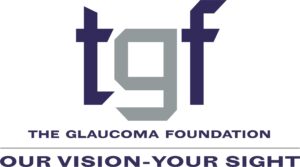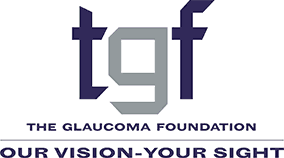
When it comes to caring for your eyes, you need to be on the lookout (pun intended) for more than just refractive errors. Play the long game, and you can address the effects of more serious conditions like macular degeneration, cataracts—and, more importantly, glaucoma.
This group of diseases occurs amid high levels of eye pressure, which can damage the optic nerve at the back of the eye and ultimately cause blindness. That means it can hide in plain sight. Regular and preventable eye exams are the only way to catch it early, which is why open-angle glaucoma—which generally doesn’t exhibit symptoms—is the most common. Today, over three million Americans live with glaucoma.
If you’re among them, you may not have noticed the condition until you experience more severe symptoms like eye tenderness and intense pain, blurred vision, light sensitivity, and even nausea and vomiting. If that’s the case, don’t worry. Even after you’re diagnosed with glaucoma, you can still manage its symptoms, maintain a good quality of life, and ultimately avoid permanent vision loss. Here’s how.
Eat well
Prevent glaucoma from worsening by giving your eyes the nutrients they need. You can start by simply avoiding processed foods that contain empty calories, as doing so can limit ocular dysfunction and effectively reduce damage to your optic nerve. Pair this practice with the consumption of eye-friendly nutritional powerhouses like fruits, nuts, fish, and leafy greens. These offer hefty amounts of Vitamins A, C, and E, omega-3 fatty acids, and the antioxidants lutein and zeaxanthin, all of which can prevent your retinas from breaking down, lower ocular pressure, and improve blood flow to the eyes.
Don the right eyewear
Two glaucoma symptoms that can immediately impact your quality of life are gradual vision loss and light sensitivity. With the right eyewear, you can easily manage these issues and independently go about your daily routine for longer. If gradual vision loss takes away from your ability to read, write, or drive—which can impact everything from your career to how you run errands and do hobbies—reading glasses can help by refocusing, magnifying, and ultimately clarifying your vision. These come in a diverse range of lens types to suit your specific needs. Reader’s Drama frames, for instance, use bifocal lenses handy for driving since they correct vision at two different distances. Meanwhile, its Lindley comes with additional anti-reflective blue light filters perfect for when you’re using digital devices. You’ll also want to take after Bono, who also has glaucoma, and wear sunglasses when you’re outdoors to prevent discomfort and pain from light sensitivity. Get a pair from brands like Ray-Ban and Oakley, as they usually come with a UV 400 label and polarized lenses. This will cut glare while blocking 100% of UV rays, keeping you comfy, lowering your chances of getting into accidents due to poor vision—and preventing you from developing conditions like cataracts and AMD on top of glaucoma.
Restructure your environment
Speaking of getting into accidents, you’ll particularly want to avoid falling down. You’re more vulnerable to such incidents since glaucoma attacks your peripheral vision first, which is why the Wilmer Eye Institute finds the condition can be fatal among adults aged 65 and older. The “scanning” technique, which involves sweeping your eyes from left to right before walking forward, can help prevent accidents. However, you can always make things easier for yourself by restructuring your home environment. Use light fixtures that evenly illuminate every room and position any reading areas and workspaces near windows. When furnishing your spaces, follow an open layout with clear pathways that you find easy to navigate. If you’ve got rugs or carpets, secure them with tape so you don’t slip on them. You can also use contrasting colors so you can better distinguish items from one another. For example, dark tablecloths can help you easily see your white plate during mealtimes. Finally, keep your house free of clutter so you don’t trip over anything, and install handrails in strategic places—like along stairs and in the bathroom—for additional assistance when you need it. With these design changes, you can more easily keep yourself safe even when glaucoma steals away your eyesight.
Work with your care team
It’s important to remember that there’s currently no cure for glaucoma. By keeping a close eye on it, you can promptly respond to any changes and prevent the condition from worsening. The best way to do that is to stay in constant contact with your care team. Keep up those frequent eye exam appointments with your ophthalmologist to track any developments—and, of course, don’t forget to follow their treatment plans to a T. Doing so will typically involve regularly applying eye drops at exactly the prescribed dosage, usually once a day. Brands like Xalatan, Timoptic, and Alphagan P are often recommended because they can lower ocular pressure and prevent further damage to the optic nerve. By closely working with your care team, it’ll be easier to manage glaucoma symptoms.
Due to how it impacts your quality of life, a glaucoma diagnosis can be challenging to manage. Try the above tips to simplify the process. Want to learn more about what we do for glaucoma? Keep looking through what we have to offer here at The Glaucoma Foundation.
Article written by Rose Joanne
Exclusively for

